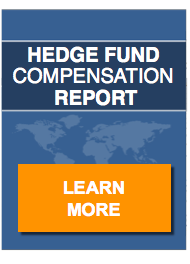The term hedged fund was coined by Alfred Winslow Jones in 1949 and gained traction in the financial community largely because Jones was a financial journalist. Although Jones founded a private investment company, he was hardly the father of the hedge fund industry. It is more accurate to say he named the baby. Private investment funds proliferated in the rising market of the 1920’s up to the 1929 collapse, which is remembered as Black Tuesday. Most of these private investment vehicles met the definition of “hedged fund” but they did not carry the moniker.
Eventually, Jones’ term, “hedged fund”, morphed into hedge fund. The number of hedge funds expanded exponentially in the post World War II economic boom, achieving over $1.9 trillion in assets under management disbursed among more than 8000 funds.
A Few Bad Apples
In a barrel of this magnitude, it would be naive to assume there are no bad apples and countless newspaper headlines have confirmed, beyond any doubt, that such assumptions are indeed naive. Money, particularly significant sums of money, is a powerful temptation, a temptation some have proved themselves incapable of resisting, e.g., Bernie Madoff.
In a recent Reuter’s story, the concept of claw-back was introduced by SAC Capital’s Stephen A. Cohen. Under a claw-back policy the bonuses for employees found to be engaging in unscrupulous practices, specifically using insider information, would be revoked, reversed or otherwise clawed back from these individuals.
How this would be accomplished remains unclear. The policy would take effect next year, according to Cohen, whose firm has paid millions in fines to SEC in multiple insider trading stings involving at least nine past or present employees.
Publicity Stunt or Deterrent
Some suggest claw-back is largely a public relations move designed to stem the flow of money amd clients exiting the firm.
David Kochanek, publisher of HedgeFundCompensationReport.com states, “This is largely a PR move… or more appropriately an IR move.”
One thing, however, is certain; the hedge fund industry has a long history of corrupt practices and the image of the industry has taken a beating. This is largely the reason the hedge fund industry is among the most regulated in the nation. Given this extensive regulation, it is reasonable to question the effectiveness of instituting such a policy at SAC Capital or any other hedge fund.
Again, quoting Kochanek, “Look, no one is using insider information with the expectation of getting caught. Insider trading is already illegal and prison seems a whole lot worse than losing a few hundred thousand dollars.”
Current Regulations Are Sufficient
Kochanek’s points are not lost on others in the industry as evidenced by the deafening silence on the subject of claw-backs from other hedge fund managers.
As mentioned earlier, the regulatory burden on hedge funds is all but crippling and these regulations are viewed by the bulk of the hedge fund industry as adequate deterrents to the illegal practice of insider trading.
And compliance staff hiring has increased over the past couple of years.
This suggests that the regulations in play are the best remedy for keeping hedge funds operating above board and that Cohen’s claw-back policy represents too little, too late, or worse, simply a gambit to retain investors.


